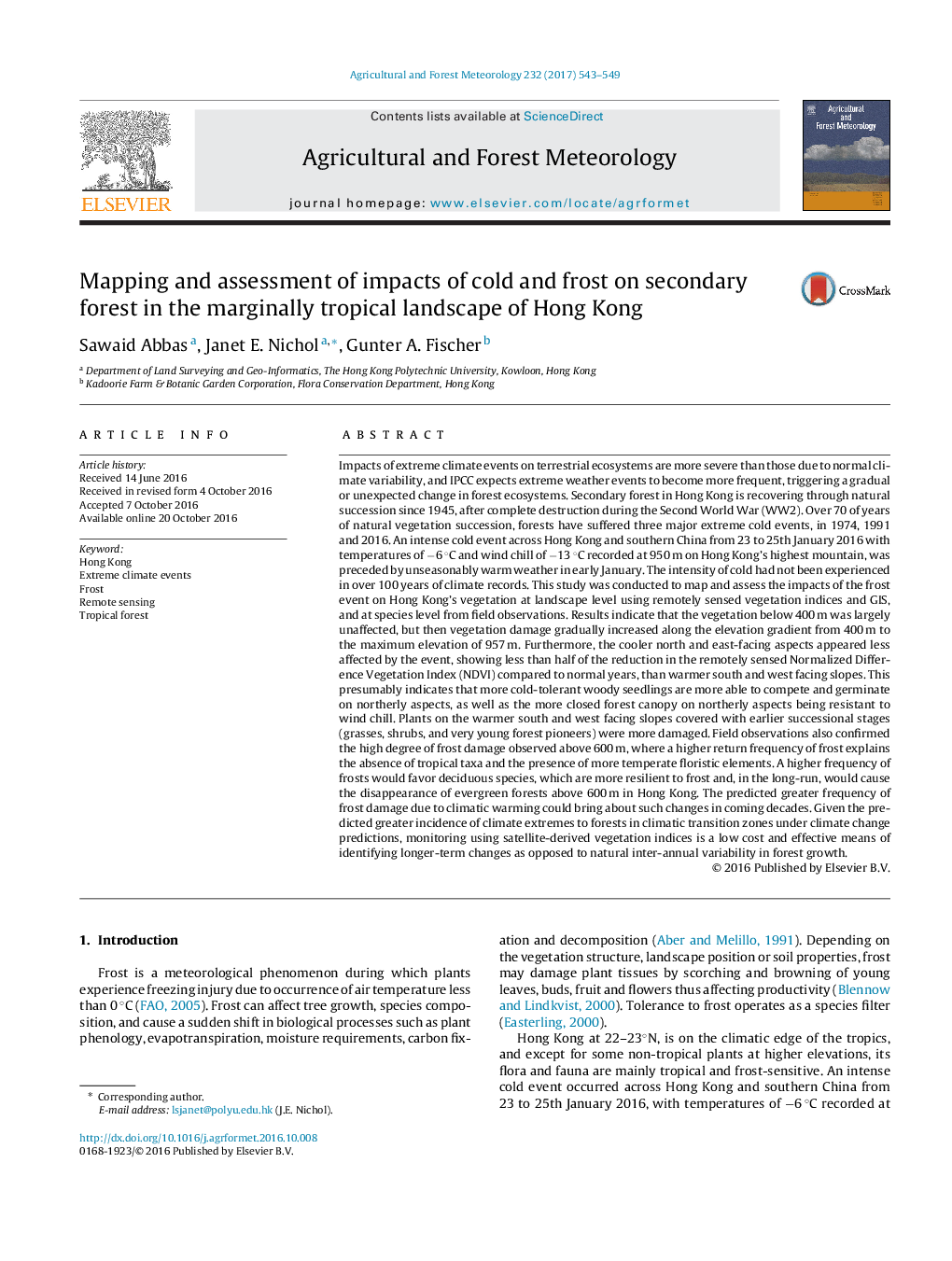| Article ID | Journal | Published Year | Pages | File Type |
|---|---|---|---|---|
| 6458146 | Agricultural and Forest Meteorology | 2017 | 7 Pages |
â¢An extreme frost (â6 °C) was recorded in the marginally tropical landscape of Hong Kong.â¢Shrubs and early successional forest were severely damaged on higher elevations.â¢The return frequency of frost explains the absence of many tropical taxa in Hong Kong.â¢Increased frequency of such extreme events is likely under climate change predictions.
Impacts of extreme climate events on terrestrial ecosystems are more severe than those due to normal climate variability, and IPCC expects extreme weather events to become more frequent, triggering a gradual or unexpected change in forest ecosystems. Secondary forest in Hong Kong is recovering through natural succession since 1945, after complete destruction during the Second World War (WW2). Over 70 of years of natural vegetation succession, forests have suffered three major extreme cold events, in 1974, 1991 and 2016. An intense cold event across Hong Kong and southern China from 23 to 25th January 2016 with temperatures of â6 °C and wind chill of â13 °C recorded at 950 m on Hong Kong's highest mountain, was preceded by unseasonably warm weather in early January. The intensity of cold had not been experienced in over 100 years of climate records. This study was conducted to map and assess the impacts of the frost event on Hong Kong's vegetation at landscape level using remotely sensed vegetation indices and GIS, and at species level from field observations. Results indicate that the vegetation below 400 m was largely unaffected, but then vegetation damage gradually increased along the elevation gradient from 400 m to the maximum elevation of 957 m. Furthermore, the cooler north and east-facing aspects appeared less affected by the event, showing less than half of the reduction in the remotely sensed Normalized Difference Vegetation Index (NDVI) compared to normal years, than warmer south and west facing slopes. This presumably indicates that more cold-tolerant woody seedlings are more able to compete and germinate on northerly aspects, as well as the more closed forest canopy on northerly aspects being resistant to wind chill. Plants on the warmer south and west facing slopes covered with earlier successional stages (grasses, shrubs, and very young forest pioneers) were more damaged. Field observations also confirmed the high degree of frost damage observed above 600 m, where a higher return frequency of frost explains the absence of tropical taxa and the presence of more temperate floristic elements. A higher frequency of frosts would favor deciduous species, which are more resilient to frost and, in the long-run, would cause the disappearance of evergreen forests above 600 m in Hong Kong. The predicted greater frequency of frost damage due to climatic warming could bring about such changes in coming decades. Given the predicted greater incidence of climate extremes to forests in climatic transition zones under climate change predictions, monitoring using satellite-derived vegetation indices is a low cost and effective means of identifying longer-term changes as opposed to natural inter-annual variability in forest growth.
